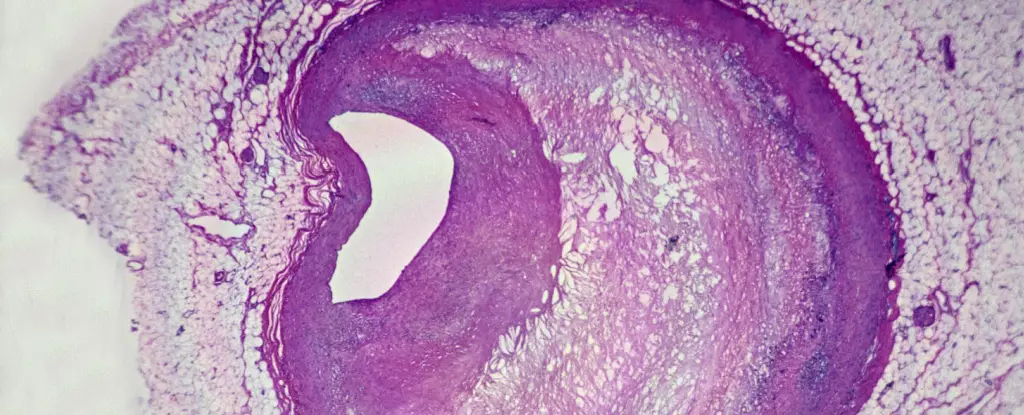Microplastics are becoming an omnipresent element in our environment, infiltrating various biological systems, including human tissues. This article explores the surge of microplastics, their penetration into human biology, and the emerging implications for cardiovascular health, particularly as observed in recent studies. It’s imperative to examine the intersection of plastic pollutants and health risks to better understand and combat this alarming trend.
Modern society’s dependence on plastics has led to their widespread distribution in nature and, worryingly, inside the human body. Recent studies indicate that microplastics—tiny plastic fragments often invisible to the naked eye—have been discovered in major organs, including the placenta, hinting at their ability to navigate fundamental biological barriers. This finding raises critical concerns regarding potential health impacts, as exposure to these substances has far outpaced our understanding of their implications. The pervasive nature of microplastics in everyday items effectively synergizes with human exposure, making it vital for researchers to investigate the real risks associated with their presence in biological systems.
Currently, much of the research surrounding microplastics has utilized laboratory settings such as organ-on-a-chip systems and animal models, primarily mice. While these studies offer valuable insights into the potential biological effects of microplastics, the concentrations used may not accurately reflect real-world exposure levels faced by humans. The need for human-based observational studies is evident, and a recent study emerging from Italy sheds light on this pressing issue.
In a groundbreaking study led by Raffaele Marfella at the University of Campania, 257 patients who underwent a carotid endarterectomy—an operation aimed at clearing clogged arteries—were observed over a span of 34 months. The findings were staggering: nearly 60% of those examined had quantifiable levels of polyethylene in their arterial plaques, and 12% contained polyvinyl chloride (PVC). These outcomes indicate a significant prevalence of microplastics among individuals who have experienced cardiovascular ailments, linking plastic exposure directly to health concerns.
The implications of this study are profound. The patients who exhibited microplastics in their arterial plaques encountered a 4.5-fold increased risk of experiencing severe cardiovascular events—including strokes and heart attacks—compared to their counterparts without detectable microplastics. Laboratory analyses have demonstrated that microplastics can provoke inflammatory responses and oxidative stress in heart cells, leading to compromised heart function and increased likelihood of scarring.
While these findings established a notable correlation, it’s crucial to approach them with caution. The observational nature of the research prohibits definitive conclusions that microplastics are the direct causative agents of cardiovascular issues. It is essential to consider other risk factors, such as smoking habits, lifestyle choices, and exposure to environmental pollutants, which might contribute to the observed health outcomes. Therefore, although microplastics and cardiovascular disease share an association, further research is warranted to illuminate the causal pathways.
The methodology employed in this study was robust, utilizing pyrolysis-gas chromatography-mass spectrometry to quantify microplastics, coupled with stable isotopes analysis to verify the materials’ origins. Additionally, powerful microscopic techniques revealed the startling presence of jagged plastic fragments encased within immune cells. The identification of higher inflammatory markers among patients with microplastic-laden plaques further underscores the potential link between plastic exposure and cardiovascular distress.
However, such methodologies must be approached painstakingly to understand the full spectrum of health risks associated with microplastics. Researchers like Philip J. Landrigan have pointed out that this discovery raises vital questions about how to minimize exposure and protect public health. The paradox is that while microplastics are increasingly linked to health complications, rates of cardiovascular diseases are reportedly declining in certain regions—an observation that necessitates careful analysis of the factors involved.
The findings from this pivotal study call for an urgent reassessment of how society addresses plastic pollution and its health implications. Without a doubt, the intersection of microplastics and cardiovascular risks is an emerging field that demands further investigation. Additional longitudinal studies are essential to clarify the potential mechanisms of harm and establish guidelines to mitigate exposure.
As plastic production continues to escalate globally with a mere fraction being recycled, understanding the health risks posed by these materials must become a priority. The discoveries made thus far not only highlight an alarming trend but also illuminate the path required for preventative measures and public health advocacy. Emphasizing the urgency of this issue is critical, as the health of current and future generations depends on proactive measures against plastic pollution.

Leave a Reply